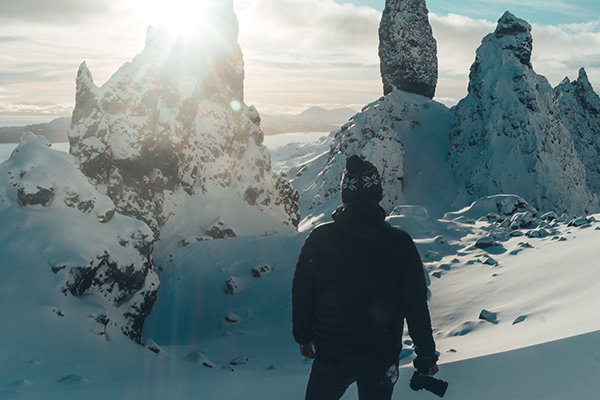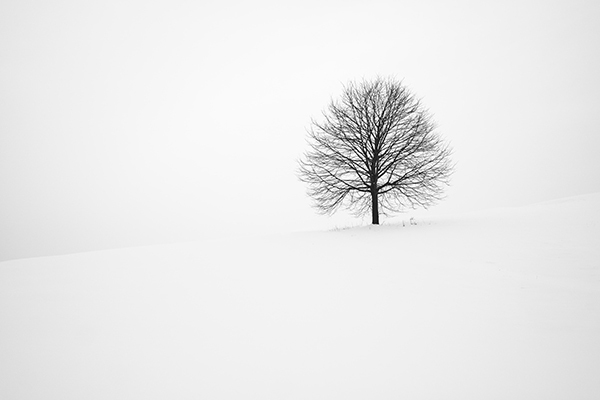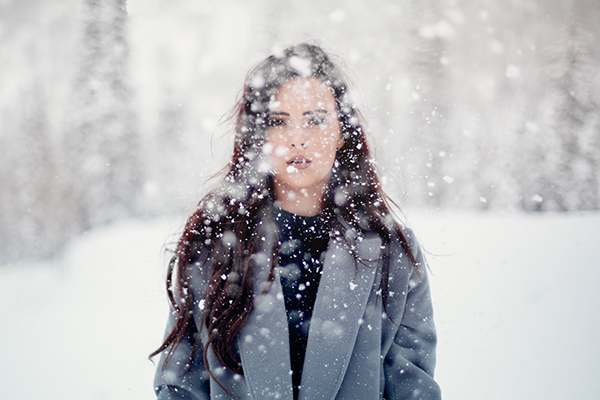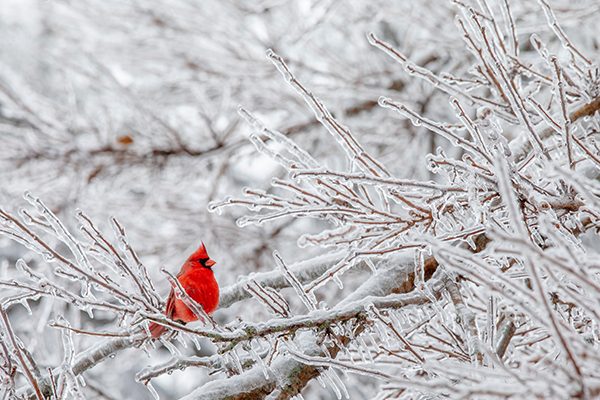
For those adventurous enough to brave the cold and harsh environment, winter photography can be a real joy. A lush snow-covered landscape, an ice pond at sunset, or a model displaying the latest snow wear — winter photoshoot ideas abound. Of course, Photographing winter scenes can be a challenge, but one that may pay off beautifully.
For some winter photo tips that go beyond “take pictures with snow,” read on below. We will provide some winter photography ideas that will help you take your photos up a notch.
Operating Your Camera in the Cold

The first thing to think about when it comes to photographing winter scenes is that your camera is going to perform differently in cold weather. Prepare for a slower performance and shorter battery life. Most DSLR or mirrorless cameras are actually rated to shoot in temperatures no colder than freezing (32°F). However, do not be alarmed about this unless your photoshoot is in extreme cold for an extended period. Your camera can likely withstand much colder temperatures than that without any long-term damage or serious failure.
There are also dangers to your equipment from the elements. Be careful about snow making its way into your gear. It’s worth taking care to ensure it’s dry when you’re finished, in case any moisture has affected your camera or lens. The last thing you want is a fungus growing inside your expensive equipment. When it’s time to dry your camera, look for a warm environment, but avoid extreme heat as sudden temperature fluctuations can damage your gear.
Finally, there is the not-so-simple matter of actually operating your camera in cold weather. If you’re sane, you will be bundled up from head to toe. Fingerless gloves are the perfect solution for most situations, allowing you to easily press buttons while keeping you warm. But if it gets too cold where you are, fingerless gloves are just inviting frostbite. The best you can do in that case is to make it as easy on yourself as possible. If you have multiple camera options, choose the one that’s the easiest to operate. And bring a tripod to give yourself maximum flexibility with your hands.
Optimize Your Exposure for the Weather

Snow reflects light to such an extent, it’s possible to literally sunburn your eyes if you spend too much time outside without adequate eye protection. As a result, it can also cause you to accidentally underexpose your scene when shooting pictures with snow.
This is because the average camera light meter is designed to automatically adjust your settings so your image is about 18% gray. While this helps the camera correctly expose your average photo, when shooting lots of bright, white snow, it will overcompensate and underexpose your image.
The best way to combat exposure issues is to shoot in manual and master the exposure triangle. The exposure triangle refers to your aperture, ISO, and shutter speed settings. Understanding how each of these settings will impact your image, and knowing how to delicately balance them to achieve the perfect exposure, is the mark of a skilled photographer.
Winter Portrait Photography

Photographing winter portraits is like shooting any portrait, but with a change of setting and available choices. Your model won’t enjoy wearing a dress in the Alaskan wilderness in February. But that doesn’t mean you can’t create a sense of glamor and fashion in your winter portrait. With the right coats, hats, gloves and other accessories, you can find an intimacy that will bring the viewer right into the scene.
Consider also how your subject fits in with the setting. Do you want vibrant colors to contrast with a dreary winter landscape, or do you want a more subtle blending of your model with your snowy white environment? In addition to color choices, you can try adjusting the lighting to achieve a certain mood. Or try taking advantage of any fog in your environment to add mystery or gloom to the scene.
Winter Wildlife Photography

To get winter photoshoot ideas for wildlife, you might want to do some research. Learn something about bird migration in your area. Many species will fly south for the winter months, and you will want to time accordingly. But also research other winter animal behaviors in your region.
Consider the thematic implications of photographing a fox in the snow as opposed to a summer fox frolicking in the grass. Bright colored animals such as birds will look extra vibrant against a snowy white background.
If you don’t want to go out hunting for wildlife, try attracting birds with a bird feeder. Or use a trail camera to monitor regular activity.
Winter Landscape & Environment Photography
Winter landscapes have the potential to be impressive and awe-inspiring, or dreary and ominous. As the photographer, you can control the mood and tone of the image by choosing your location, and the time of your shoot. Consider trying to capture some of the unique shapes and sights that occur in winter, whether it is an ice stalactite or snow capping a mountain. For capturing the details in distant landscapes, a long telephoto lens will do the job.
If a landscape image is not in the cards, you can always take extra-close macro shots of frost or snowflakes. Nothing captures the magic of the season like the incredible detail found in the smallest natural pleasures. Closeups of icicles are another fun option only possible a few months out of the year.
Conclusion
If you’re thinking about going on a winter photoshoot, following this guide is a great way to prepare. You will want to choose your winter background carefully to fit the mood and theme you want to convey. And it’s extra important to be prepared—don’t forget your sunglasses and jacket!






